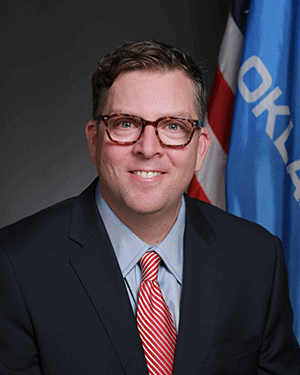
Last session, the Legislature raised taxes on cigarettes, motor fuels and production from new oil and gas wells. This provided enough money to fill a budget hole that loomed for much of the year. It also raised enough to fund an average teacher pay raise of $6,100 – the first raise in a decade – as well as give additional benefits to teachers and funding for textbooks and classroom materials. Money also went to DHS to support in-home care for elderly or disabled adults. Medicaid providers saw reimbursements increased. The Department of Health was able to reinstate funding for child abuse prevention services. Also, money was appropriated to the Department of Corrections to give their employees and guards a very modest pay raise. And, legislators were able to appropriate enough dollars to the Transportation Department to continue its 8-year plan for roads and bridges.
I’m hearing arguments that the state Legislature raised taxes too high last year. I’ve heard some say there will be a billion-dollar budget surplus next year.
I hate to argue, but it’s too early to tell. The taxes the Legislature raised last year have already been spent to fill the $800 million budget hole and provide funding to areas of the budget that needed it. We may, for the first time in several years, have enough to fund core government services instead of cutting services to the vulnerable among us. Enough to keep our teachers in classrooms, fund healthcare, mental health and elder care, put a dent in the disabled services waiting list, sufficiently staff our state public safety agencies, continue the push to fully repair state roads and structurally deficient bridges, and more.
The good news is our economy is trending positive. According to the Office of Management and Enterprise Services (OMES), the past two months’ data shows 2 percent growth above the amount the office estimated for the current fiscal year. This is good news, but we simply do not have enough data to predict a massive surplus at this time.
Let’s assume receipts keep coming in at the same rate as the past two months for the entire year. That would be an overall surplus of 2 percent. The total appropriated state budget was around $6.5 billion last year. A 1 percent change equals around $65 million; 2 percent growth would be a surplus of $130 million – certainly not chump change, but not the excessive billion-dollar amount some are arguing. To reach that amount, receipts would need to come in at more than 15 percent over estimates.
We are moving ahead with the audits of state agencies to find duplication of services and efficiencies. This is good, but the Legislature must make a concerted effort to scrutinize spending across-the-board to stretch our budget and fund what really needs to be funded.
Thankfully, we made a significant dent in our structural budget deficit problem. The policies the Legislature enacted over the past two years have allowed a shift from using one-time, erratic funding sources to more stable recurring sources of revenue. This will help stabilize our budget, but there is still much work to do. We need the economy to hold like it is or get better so we can focus on long-term planning to help us save dollars instead of focusing on filling budget holes.
Fortunately, we shouldn’t have a budget hole next year, but that doesn’t mean we’ll be flush with cash. For now, growth is positive based on the two-months of data we have, but much can change and in a short time, in Oklahoma – as we all know.